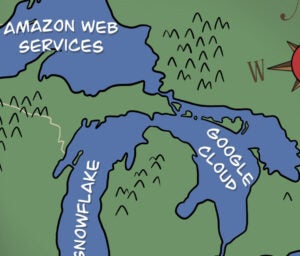 “Data-Driven Thinking” is written by members of the media community and contains fresh ideas on the digital revolution in media.
“Data-Driven Thinking” is written by members of the media community and contains fresh ideas on the digital revolution in media.
Today’s column is written by Peter Davies, chief revenue officer at ROKT.
Digital is constantly changing. The promises of programmatic Internet display advertising are not being fulfilled, according to my conversations with marketers around the world. As a result, marketers are looking to reallocate budget to alternative digital channels where effectiveness and conversion rates are higher and more transparent.
That’s not to say that display is dead. It won’t die any time soon. Internet display advertising will overtake paid search for the first time in 2016, predicts Zenith Optimedia. Programmatic marketing and automation drives this growth as businesses seek the marketing nirvana described as “one-to-one marketing and storytelling at scale” by Dennis Buchheim, Yahoo’s vice president of product management.
Unfortunately, progressive marketers realize programmatic display – at least in its current form – is not the pathway to this nirvana, despite the industry hype and raft of investments in technology and systems over recent years. There are four reasons why, including consumer behavior, bottom-of-the-funnel metrics, a lack of transparency and the cookie issue.
Consumer Behavior
As consumers we want content and have therefore trained ourselves to ignore banners, as they’ve added little value to our online experience over the past 20 years. Even now, with all the data and technologies we have for targeting, most campaigns still see less than 1 in 1,000 consumers engaging with display ads. Research indicates this is because users almost never look at anything that looks like an advertisement, whether or not it’s actually an ad.
Bottom-Of-The-Funnel Metrics
Dynamic remarketing is designed to help overcome the natural resistance of consumers to display. By serving ads that feature products or content they have recently viewed, dynamic remarketing “reminds” consumers of messaging in later online journeys. Dynamic remarketing is now a mainstay of most digital performance campaigns, and it can work well. However, in order to drive consideration – the most important aspect in increasing market share – advertisers need to have a larger creative canvas and be more emotive in their message. That’s almost impossible within a 728×90 ad, and anything bigger interrupts the consumer’s online experience, which can adversely impact brand perception.
Lack Of Transparency
Digital has given marketers rich information on customer behavior and new insights into ROI, but a number of factors impede the performance quality and transparency of programmatic marketing. While it provides scale, programmatic marketing is unregulated, which increases the risk of messages appearing across unsavory Internet real estate. Programmatic marketing can also distract marketers from targeting humans and instead focus some people’s attention on strategies to drive bot traffic. More recently, the industry has grappled with viewability, with new standards being released by the IAB to ensure that advertisers are getting what they pay for.
Consumers Vs. Cookies
The world of programmatic marketing is built on data and technology that relies on third-party cookies. While these cookies still have their place, their importance is crumbling because of multidevice users, the increasing use of apps, massive interest in mobile usage and increasingly savvy consumers. Cross-device and cross-media consumption is on a steep rise, yet third-party cookies generally don’t work on mobile. Perhaps most significantly, consumers are increasingly choosing to turn tracking features off manually or install software that does it automatically. In addition, a number of countries have mandated legal changes that make cookie tracking even more fraught for marketers.
With all of these limitations, it’s no surprise that marketers are looking to alternative channels to drive greater engagement. Top of their priorities is delivering a native experience, regardless of the device a consumer is using. New advances in technology mean that log-in, browsing and transactional information can be used to present relevant offers and communications during natural breaks in a consumer’s journey. Creating this native and personalized experience increases engagement and brings us one step closer to the marketing nirvana of delivering brand messages to consumers in the right place, at the right time.
Follow Peter Davies (@PeteDavies), ROKT (@ROKT_Media) and AdExchanger (@adexchanger) on Twitter.













